[Chapter 1] Section 1 ①
The term “work” in this chapter refers to work subject to special education as stipulated in Article 36, Item 41 of the Ordinance on Industrial Safety and Health (i.e., work carried out at a place having a height of 2 m or more, where it is difficult to provide a working floor, and a full harness type is used as fall arrest equipment). Examples of such work include the following:
|
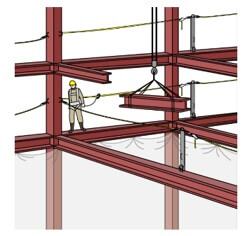 |
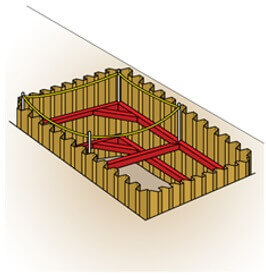
Check the equipment and other items used to prevent falling/tumbling during these types of work.
1. Types, structures, and handling methods for typical equipment
(i) Fall arrest equipment, etc.
■ Full harness type fall arrest equipment
This equipment consists of parts with a structure for supporting the body load at multiple points such as shoulders, waist, and thighs, when arresting a fall.
“Example without a lanyard”

■ Body belt type (single suspension) fall arrest equipment
This equipment consists of a belt-like part worn on the waist of the body.
Example of lanyard (with rope and hook)

■ Lanyard
This equipment consists of a rope or strap (hereinafter referred to as “lanyard rope, etc.”) for connecting the full harness or body belt to the main rope or other mounting equipment, etc. (i.e., equipment for safely mounting fall arrest equipment) and connector parts.
Types with a shock absorber or winder include the pertinent shock absorber, etc.
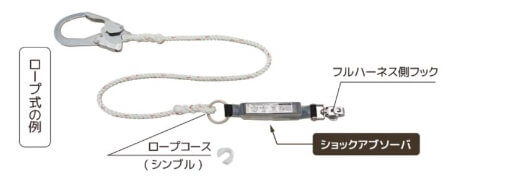
■ Auxiliary rope
A short rope or strap (hereinafter referred to as “rope, etc.”) which, when a worker moves, is attached to the mounting equipment at the destination before the main lanyard is reattached, in order to keep the worker constantly connected to the mounting equipment (double lanyard).
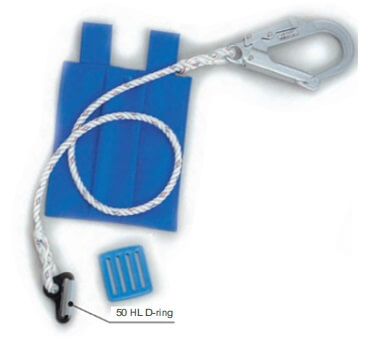
■ Body belt type (U-shaped suspension) and length adjuster
Protective equipment for work positioning used for work on poles, etc.
This equipment is used by adjusting to a rope length suitable for work using the length adjuster.

■ Work via work positioning
This refers to work carried out while holding the body of a worker in a U-shape suspended state through the tension of ropes, etc.
(Example: Working on a utility pole)
Since the rope for U-shaped suspension is easily damaged by friction with objects each time it is used, the rope must be inspected with special care. For this reason, some types have a red core to indicate the degree of wear.

When U-shaped suspension is used, it is also necessary to use fall arrest equipment, etc.
[Example of full harness type fall arrest equipment for use together with U-shaped suspension]
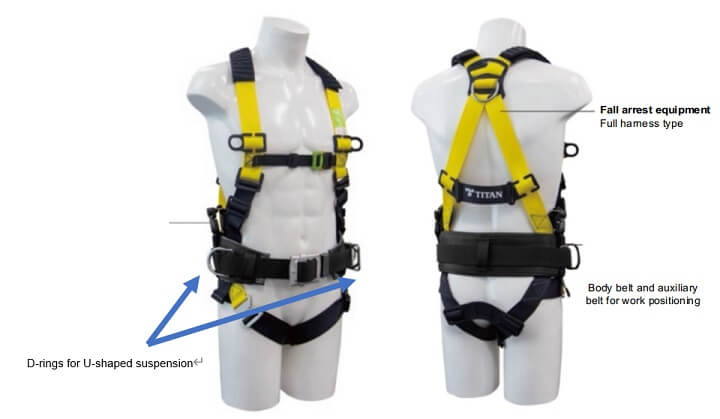
There is a full harness type for use together with U-shaped suspension, as fall arrest equipment that can be used in work via work positioning.
When using this type, the working posture is maintained with a special rope for U-shaped suspension connected to D-rings on both sides of the waist, and a lanyard, etc. connected to the D-ring on the back (or chest) is connected to a lifeline or other mounting equipment, etc.
In the case of utility pole work, it is usually possible to attach a hook above the head, so it is recommended to use full harness type fall arrest equipment at a height of 2 m or more.
受講者様のご希望に合わせ、以下のタイプの講習会もご用意しています


このページをシェアする
講習会をお探しですか?